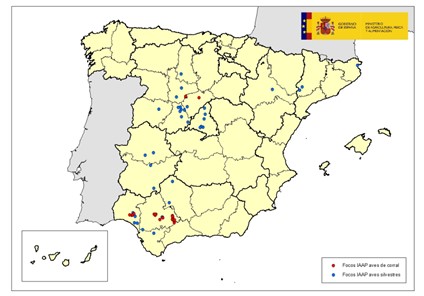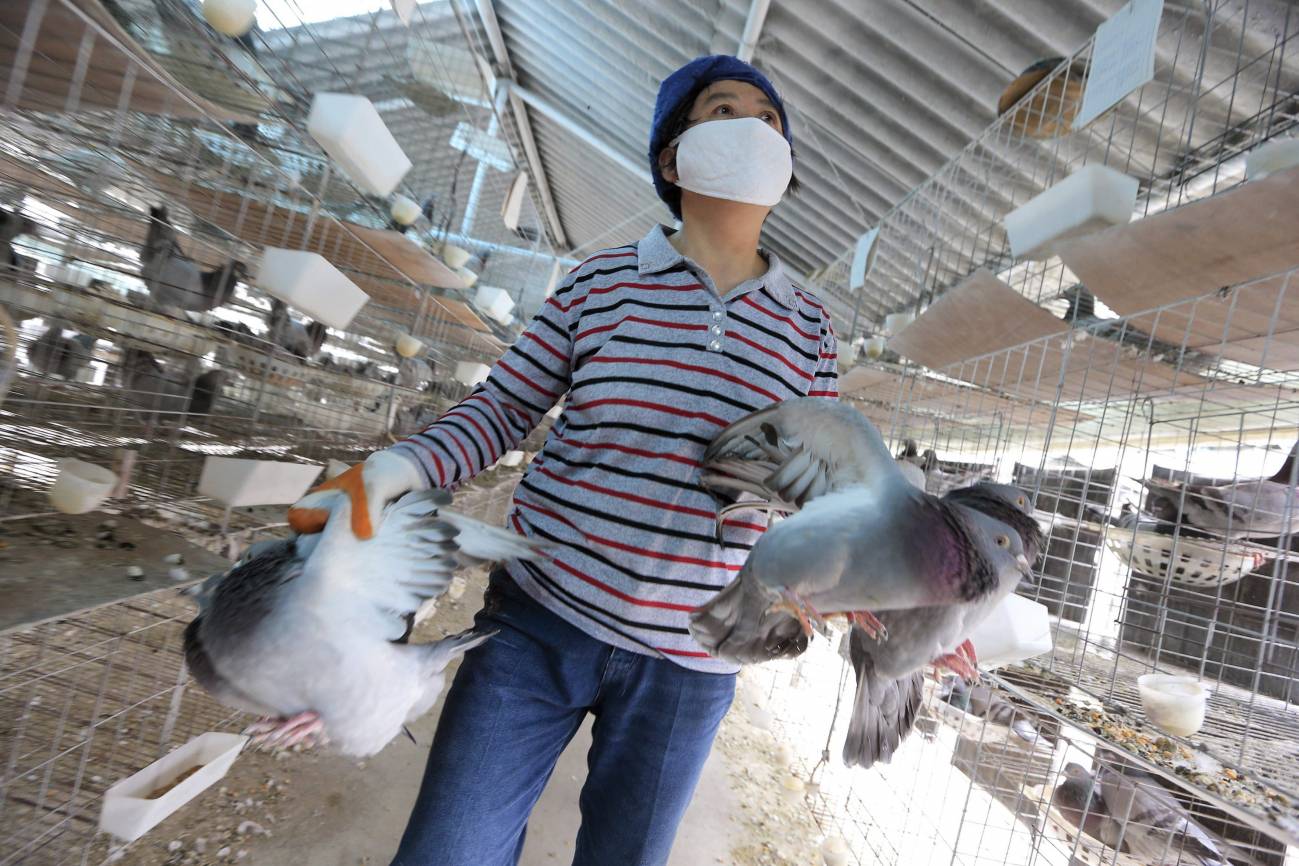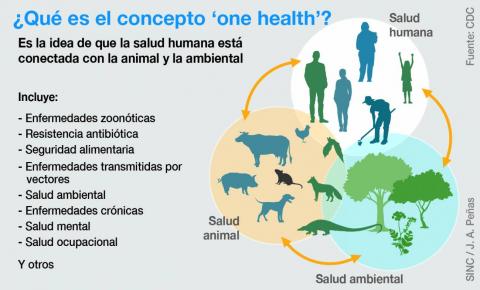Avian influenza is one of the most important viral diseases in poultry farming. It is caused by avian influenza virus type A (family Orthomyxoviridae) and is classified into two categories: high and low pathogenicity (HPAI and LPAI respectively). HPAI is a constant threat to the global poultry industry and to vulnerable wildlife species, causing a disease with high mortality in infected birds. It is included in the list of notifiable diseases of the OIE (International Organisation of Epizootics).
Its natural hosts are wild birds, especially waterfowl, which historically hahistorically have not been affected by the disease. However, in 2002, a new strain causing mass mortality in wild birds was described for the first time. Since then there have been several epidemic waves spread by migratory birds to several continents. Contact between wild and domestic birds has introduced the disease into the poultry sector. As a result, more than 50 million domestic birds have died or been culled in the last two years alone.
Spain is highly vulnerable as more than 1,500,000 wintering migratory waterfowl arrive each year from infected countries.
The susceptible population of wild and domestic birds in Spain is very high, and the potential economic impact is high given that the Spanish poultry sector is the second largest livestock producer. However, the current epidemiological situation of avian influenza in our country seems favourable and its impact less than in the other affected countries.
No human cases in Spain
Avian influenza can be transmitted under certain conditions to humans, although the risk of this occurring has so far been considered low. Between 2003 and 2022, 864 human infections have been reported worldwide, mostly under conditions of high exposure to the virus, such as those of personnel on affected poultry farms.
But the increased incidence in recent epidemics makes these viruses a threat to public health. This, and the fact that they are viruses with a high mutation rate, makes it necessary to maintain constant vigilance in both birds and humans.
Avian influenza has never been detected in humans in Spain and the risk of this occurring is considered low. Surveillance is carried out within the framework of the National Avian Influenza Surveillance Programme of the Ministry of Agriculture in coordination with the Ministry of Health.
From the first global wave to an unprecedented epidemic
HPAI subtype H5N1 was first detected in 1996 in Guangdong, China, in domestic geese. Different types of this precursor, coupled with other influenza viruses from geese and duck reservoirs, generated multiple, much more pathogenic strains. These subtypes spread throughout Asia, Europe and Africa between 2002 and 2006, killing thousands of domestic and wild birds, as well as sporadic human cases. It is considered the first wave of avian influenza on a global scale. In Spain, the first H5N1 case was detected in 2006, in a wild bird at the Salburua reservoir, Álava.
After a few years of "moderate" notifications, the H5N8 subtype spread from Asia in 2014, reaching Europe, the Middle East, Africa and the Americas, with a high number of notifications between 2015-2017. In early 2017, one outbreak was reported in Spain in wild birds and another, with secondary outbreaks, in domestic birds.
The current global HPAI epidemic is unprecedented. This wave originated in 2020 with an increase in HPAI H5 notifications in domestic and wild birds. Initially dominated by the H5N8 subtype, it has been overtaken again by the H5N1 subtype in 2021.
In Europe, 39 countries are affected, with more than 5,200 notifications in wild birds and more than 4,000 in domestic birds. In France, 16 million birds have been culled. North America, whose last cases were in 2015, has also been affected in the current wave, with more than 28 million domestic birds killed or culled.
The impact of Spain's epidemics
Despite being an area with a high concentration of migratory birds and its proximity to highly affected countries, such as France, there have been few cases in Spain in the last two decades, and always at the end of each epidemic wave. A key factor may be the higher temperatures in Spain, which reduce the survival of the virus.
Thus, although bird flu has been ravaging Europe for two years, Spain has only been affected in 2022, and less than other European countries. Even so, the situation in the first months of this year in our country has been absolutely unusual, with an unprecedented number of outbreaks in wild and domestic birds. So far, 31 outbreaks have been reported in Spain in poultry, with more than 900,000 birds affected. In wild birds, 37 outbreaks have been reported, with more than 200 birds affected.

The official veterinary services have taken the relevant measures, which include the immobilisation and culling of the affected holdings; the carrying out of an epidemiological survey; the cleaning, disinfection and destruction of carcasses; and the establishment of a restriction zone around the outbreaks.
Following these actions, the Ministry of Agriculture, Fisheries and Food considers all outbreaks of avian influenza in poultry in Spain to be closed. The current epidemiological situation of avian influenza in our country seems favourable, both in poultry and wild birds.
The second most important livestock sector
The economic impact of avian influenza is very important. It affects farmers, agricultural insurers and poultry markets in general. The distortion caused by the SARS-CoV-2 pandemic and the war in Ukraine make it difficult to predict the impact on poultry markets of the current global avian influenza epidemic, although the FAO has already identified a rise in poultry meat prices.
The poultry sector, with 18 % of the Spanish final livestock production, is the second most important livestock sector in Spain, behind only the pig sector. In the EU, Spain is the second largest producer of poultry meat, the first being Poland and ahead of France and Germany. Hence the importance of animal health in Spain.
In conclusion, it is necessary to continue with the surveillance carried out by the Ministry of Agriculture to protect the livestock sector from diseases that pose a risk to its stability and profitability, thus avoiding possible economic restrictions and market disturbances.




